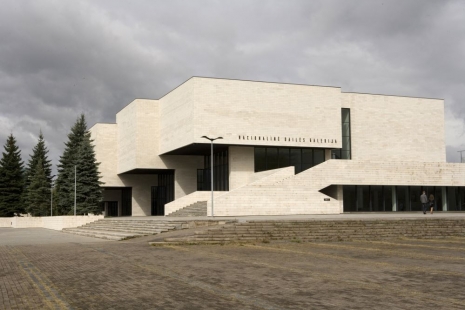The idea behind the exhibition rests on the notion of infrastructure as a way of distributing, organizing and existing power. Modern infrastructures in the post-Soviet region were formed on the ruins of the Soviet military-industrial complex, so today they find themselves in the midst of colonialism and complex economic and political processes, such as outsourcing , resourceification or externalities .), in induced voltages. Infrastructure networks – railways, gas pipelines, Internet fiber optic cables, Telegram channels, video surveillance systems, etc. – are intangible in everyday life. Meanwhile, failures, shutdowns, interruptions betray the work of the entire infrastructure and the interconnections between the infrastructures. Power and its materiality become visible, domestic, embodied in the literal sense of failure or interruption.
Russia’s large-scale invasion of Ukraine is often discussed through the prism of cyber warfare. The inextricable combination of digital technologies and kinetic weapons makes cyberwarfare one of the most important concepts that encompass the complexities of modern imperialism and warfare and their infrastructures. The exhibition offers a decolonial perspective on the ongoing imperialist war, with its complex logistics, nuclear power plant seizures, cyber warfare and artificial intelligence (AI) technologies. It is the development of this perspective that marks the “exit” from the post-Soviet state and can offer visions of new modes of operation and infrastructures.
The geography and time of the artistic practices presented in the exhibition extend well beyond the boundaries of the post-Soviet state. Focuses on the large-scale Russian invasion of Ukraine and recent political protests in various post-Soviet countries – Belarus, Ukraine, Kazakhstan, Kyrgyzstan, Sakartavel, Armenia, etc. – that have revealed the potential of technology to enable activism and volunteerism.
The concept of the exhibition is based on “disruption”, which we can understand both as a resistance to the power concentrated in infrastructures and as a gesture of solidarity. This idea is embodied in the architecture of the exhibition – the collapsed metal structures stretching across the entire exhibition space open gaps in the infrastructure and connect the works and contexts. The exhibition consists of four sections: “Infrastructural Ruins”, “Cyber War and Imperial Imaginations”, “Disruption as a Method” and “Algorithmic Spaces of Control and Resistance”.
Curators: Aleksei Borisionok, Antonina Stebur
Artists: Tekla Aslanishvili and Giorgi Gago Gagoshidze, Mariyam Medet*, Yevgenia Belorusets, eeefff, Anna Engelhardt, fantastic little splash, Uladzimir Hramovich*, The Museum of Stones editorial team*, Oleksiy Radynski*, Alicja Rogalska, Sabīne Šnē*, Nomeda and Gediminas Urbonai, XYANA*
*The works were created specially for this exhibition by order of NDG.
Exhibition architect: Gabriele Cherniavskaja
Graphic designer: Valentin Duduk
Exhibition coordinators: Kotryna Markevičiūtė, Austėja Tavoraitė
Web developer: Nicolay Spesivtsev
Translators: Paulius Balčytis, Aušra Karsokienė
Editors: Laura Patiomkinaitė – Čeikė, Dovydas Laurinaitis





